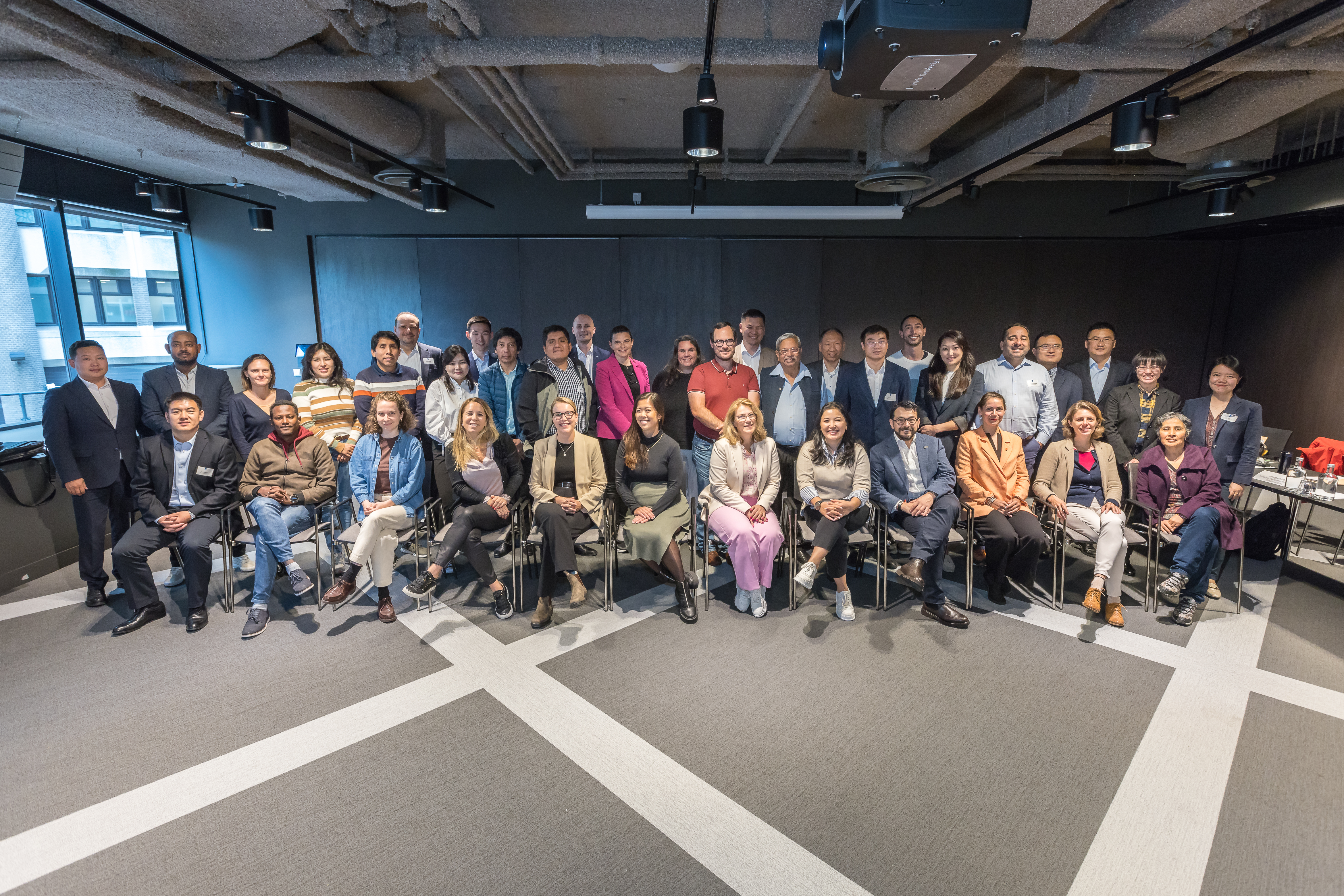Learning by experiencing: Leaders in Urban Transport Planning on a study visit in the Netherlands

Photo credit: Izziël Latour / The Hague
Written by the Dutch Cycling Embassy
Contrary to popular belief, the Netherlands wasn’t always a cycling haven. Nearly 50% of its cycling infrastructure was built after 1996. In the 1970s, like many countries, the Netherlands saw a surge in car use, leading to congestion and safety concerns. In response, the Dutch realized they couldn’t solve these issues by expanding roads and returned to cycling as a sustainable solution. This evolution provided the backdrop for the study visit with the World Bank’s “Leaders in Urban Transport Planning” (LUTP) program.
From June 9th to 15th, a diverse delegation from Colombia, Peru, Ethiopia, China, and Mongolia travelled to the Netherlands for a study visit, supported by the World Bank, and hosted by the Dutch Ministry of Infrastructure and Water Management, and the Dutch Enterprise Agency. This visit, part of the LUTP program, showcased how the Netherlands integrates cycling into a broader, multimodal transport system. The Dutch Cycling Embassy (DCE), a network of public and private organizations, collaborated with the organising parties, to fulfill the side visits as part of the program. Those site visits facilitated learning through experience—whether by walking, cycling, using public transport, or a combination of these—while engaging with local experts. This hands-on approach enabled real-time knowledge exchange on the ground.
The DCE regularly hosts delegations from around the world for tailored study visits, providing insights into Dutch cycling and mobility planning. The Dutch approach goes beyond infrastructure, combining “hardware” (infrastructure and the built environment), “software” (the human side of mobility), and “orgware” (the cooperation process between actors) to develop effective, long-term solutions. Study visits emphasize the importance of adopting a holistic approach to mobility, encouraging delegations to think beyond their usual practices. The LUTP participants engaged with the Alderman of the Hague, civil servants, and professionals from the private sector during site visits to The Hague, Amsterdam, and Rotterdam, gaining firsthand experience of the lessons learned in the Netherlands and the challenges that remain.
The first site visit began in The Hague, where participants learned about the city’s mobility transformation. Shelley Bontje, project manager at the DCE, explained the city’s historical shift toward sustainable transport. Participants then took a guided cycling and walking tour led by mobility experts. This was a critical part of the study visit, as it allowed participants to experience the cycling culture, whilst engaging and exchanging ideas with other participants from other countries.
The next day, the delegation traveled to Amsterdam by train. Traveling by public transportation with the delegation emphasized to them the ease and efficiency of the Netherlands’ integrated transport system. Once in Amsterdam, the group split up with various Dutch mobility experts focusing on a variety of themes. The knowledge exchange focus of one group included: public-private and public-public partnership, the why and how, financial and societal benefits of the partnerships, illustrated by examples of bike sharing, cycling infrastructure and mobility management.
The final site visit was to Rotterdam, where the delegation was again divided into smaller groups. One of which went by foot and public transport from the heart of Rotterdam to its suburbs to experience intermodal integration of active mobility and public transport within the Metropolitan Region of Rotterdam and The Hague.
These study visits play a vital role in deepening understanding and serve as invaluable opportunities for knowledge exchange. By actively engaging with Dutch experts and experiencing firsthand the livability of Dutch cities, participants move beyond theory to gain practical insights. The LUTP delegation, composed of leaders from five different countries, fostered meaningful discussions and a rich exchange of knowledge with Dutch experts. These interactions left a lasting impact, inspiring new ideas and approaches to urban mobility planning.